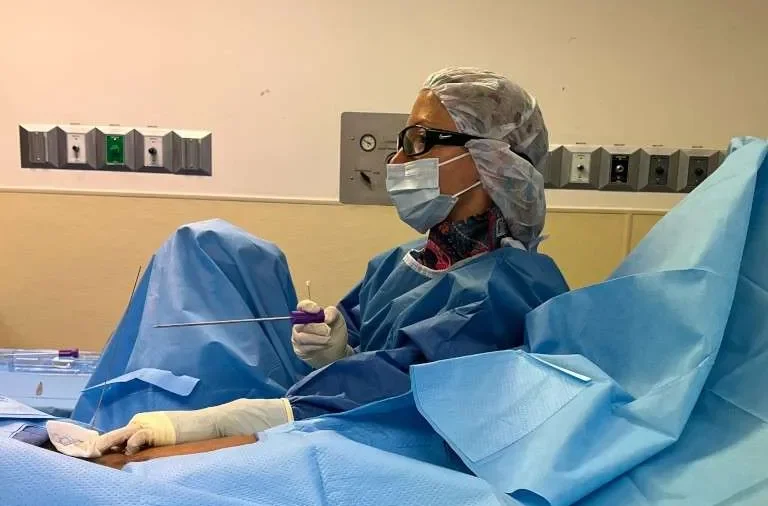Regenerative Therapy Doctors NY | Spinal Cord Stimulator

Spinal cord stimulators work by implanting neurostimulation devices to inhibit pain sensation. Even after trying different treatment methods, if you are still experiencing chronic back pain, don’t give up. Dr. Ilana Etelzon is an expert in the latest pain relief options, including spinal cord stimulation. Pain management specialists such as neurosurgeons and anesthesiologists (physicians) implant spinal cord stimulators. In order to determine whether a spinal cord stimulator is appropriate, a surgical decision must be made.
Stage 1. Temporary Trial
You must first determine whether the device reduces your pain level during a temporary trial. The purpose of an SCS trial is to determine if it will work for the type, location, and severity of your pain. Most procedures are performed in outpatient centers or in surgical suites in offices. It is recommended that you stop taking blood-thinning medications three to seven days before the trial. A local anesthetic is used to numb the lower back area. To reach the epidural space, an X-ray fluoroscopy is used to insert a hollow needle through the skin. The trial lead is inserted and placed over specific nerves. An external generator is taped over your skin, and the wires are connected to it. Generally, the procedure takes 30 minutes to complete. You will be followed up on a daily basis by a representative, and it is important to keep track of how the stimulator affects your pain, sleep, function, and the need for pain medication. The trial leads will be removed after 5 to 7 days, and you will discuss whether or not to go ahead with the implant.
Stage 2. Surgical implant
The SCS can be implanted into your body if you experienced greater than 50% improvement in pain, sleep, or function after the trial. The device is similar to a pacemaker in size and is placed under your skin during a minimally invasive procedure. You may choose to place the implant in your lower back or buttocks, depending on your comfort level. To make the procedure as comfortable as possible, anesthesia or sedation is typically administered during the two-hour implant procedure. Since you will be going home the same day, you will need someone to accompany you. Complications associated with minor surgical procedures include anesthetic risks, infection risks, poor wound healing, and pain at the surgery site. Within a few weeks or months following any procedure, these issues usually resolve on their own. Even in mild or temporary cases, complications rarely result in serious injuries or even death.
Recovery After Spinal Cord Stimulator Procedure
Implantation of the device may result in complications, including loss of pain relief, lead migration, allergy, and discomfort or pain. Complications can be resolved by reprogramming, medically treating, surgically correcting, or removing the device altogether.
The recovery process takes about four to eight weeks. Avoid lifting heavy items, twisting, bending, climbing, stretching, and any movement involving reaching over your head during this time.
You can usually swim, travel, and resume your favorite activities after your recovery period with the approval of your doctor.
Spinal cord stimulators are covered by nearly all major insurance plans, including Medicare and Medicaid. Contact us today!

